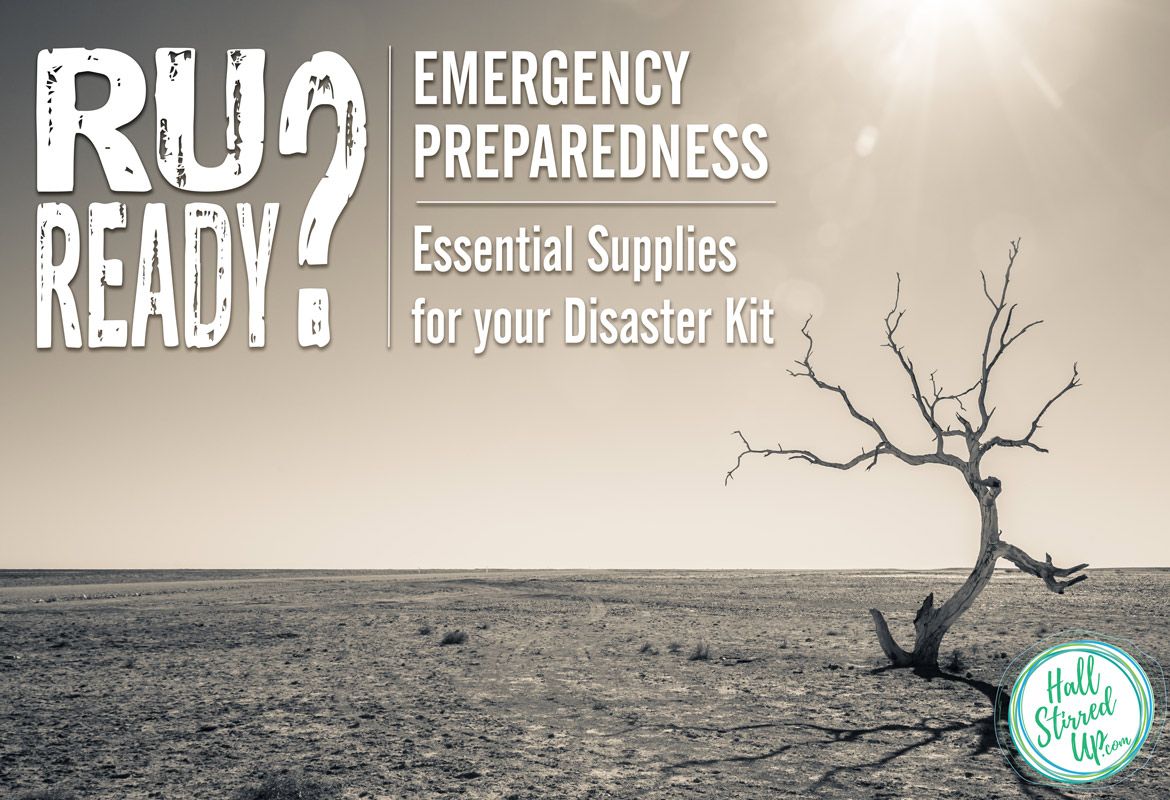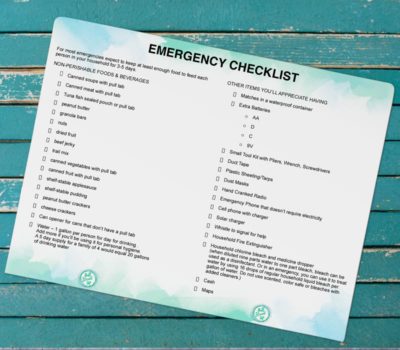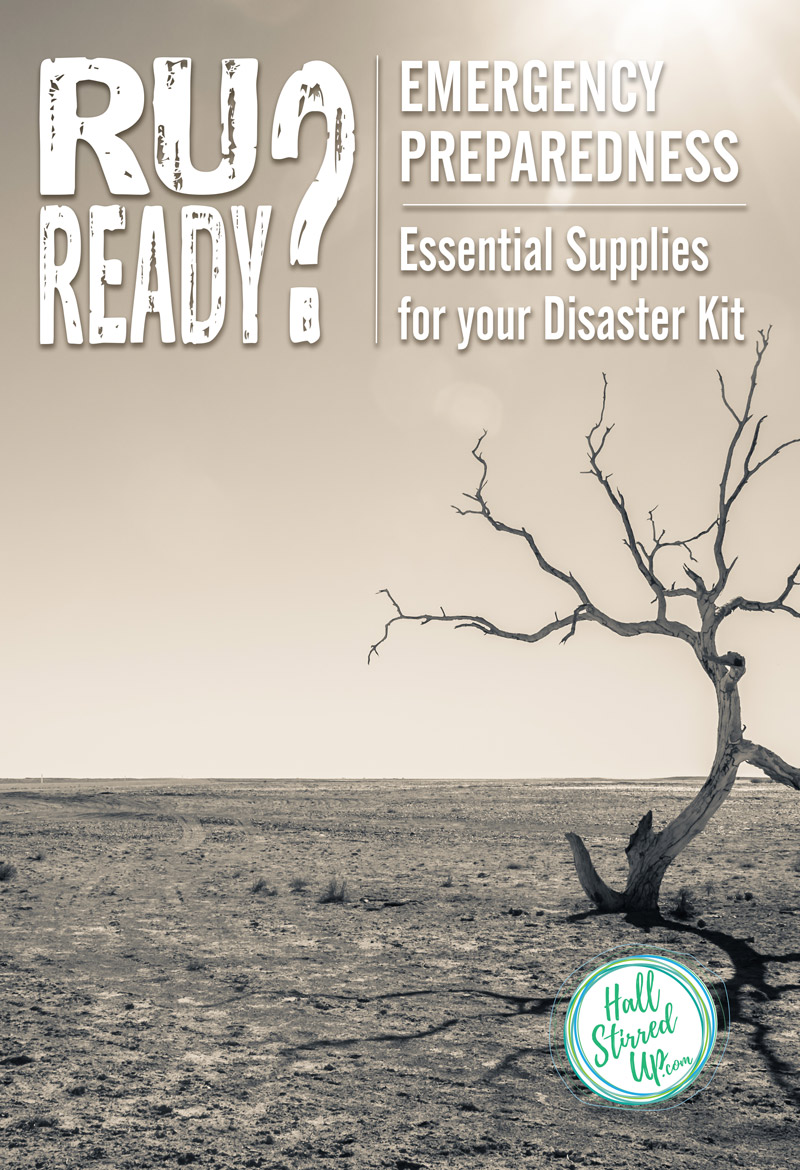
RU Ready? Essential Supplies for Your Disaster Kit
What Emergency Supplies Do You Need In Your Disaster Kit?
If you’ve read my recent posts, you’ll know preparing for natural disasters has been on my mind in recent weeks. It seems to be the season of disasters. Worldwide, so many have been affected and are hurting right now. I’ve added links where you can make a difference. Please contribute what you can. Every little bit will help.
The Red Cross
The Hispanic Federation (for Puerto Rico)
Las Vegas Victim’s Fund
Mexico Earthquake Victims
Salvation Army (for California wildfire victims)
It’s so easy to be complacent, but the recent run of disasters have knocked me out of that complacency and our family has decided to make preparedness a priority while we still have the opportunity. Let’s get ready.
In part one of my series, I talked about what kind of disaster you may face based on your local region, and the importance of creating a family plan. Part two of my series covers 5 must-have supplies you need to include in your Emergency Preparedness plan. In part three, we went over how much and what kind of food to have on hand.
In part four of my series, I want to talk about a disaster kit. Do you have one? If not, this is the first thing you can do to get ready. You never know when you’ll find yourself in a situation where you have to manage without power, internet, or if you’ll find yourself stranded without the ability to get the basic essentials.
Food And Water
I’ve talked about this in all four parts of this series, and for good reason. Water is the number one item you’ll need on your list. Store at least a gallon of drinking water per person per day. For your kit, you may also want an emergency water filter. A filter gives you an added measure of security, in case you have any worries about the purity of the water you have access to.
The food supplies you have on hand should last you three to eight days at the very minimum, depending on the situation you’re in. If you find yourself involved a major weather event or other natural disaster, it may take time for rescuers to get to you. Stick with non-perishable food items that you can eat without any cooking or preparation. Canned protein, vegetables and fruit, as well as protein bars, bread or crackers with peanut butter and nuts are all great choices. And make sure to include a manual can opener and utensils for your kit.
Medical Supplies And First Aid
If you require prescription medication, stock up as much as you can ahead of time. You don’t want to risk running out. As you put together a basic emergency kit, include some first aid items so you can treat minor aches and pains as the need arises. While you’re at it, add some wet wipes and mouth wash. Being able to clean up will make you feel much better.
Clothing And Bedding
If you’ll be on the road, or sheltering somewhere outside your home, it’s important to have clothing and bedding to make it until you can get back home. Since many natural disasters can happen quickly, you’ll want to include a small pack of clothing in your emergency kit. Include a pair of pants, a couple of shirts, as well as socks and underwear. Have every family member do the same, and make sure to stock up on baby diapers if needed. Remember, this isn’t your travel wardrobe. This is the dire emergency stuff that you’ll add to your kit ‘just in case’. It’s also a good idea to include a pillow, sheet and blanket. And when the weather turns nasty, keep it in your car.
Emergency Communication
Aside from food and water, communication will be your biggest concern in an emergency event. You need to know what’s going on and you’ll want to contact loved ones. Start with cell phones and chargers. They should be a high priority item that makes it into your emergency at the last minute. You may also want to keep a backup power supply or extra batteries for your phones in the kit. Make sure they are charged as well.
But you won’t want to rely on just your smart phone. Having a weather radio in your kit along with some spare batteries is important. You should also make a list of emergency contact information, including addresses and phone numbers. You might also want to include an old-fashioned paper map. It will come in handy if your phone dies or the wireless systems go down.
Miscellaneous Supplies
Last but not least let’s talk about some miscellaneous stuff that will come in handy. If you have a pet, make sure to stock supplies for them. You’ll want a pet carrier and leash, and don’t forget about food and water for them. If you’re traveling or evacuating with a pet, check on places that will allow you to bring your furry friends.
A small kit with some plastic bags, tarps, duct tape and a few basic tools will also come in handy if you need to fix a leak or broken window. In short, be prepared and ready for anything.
Obviously, we can’t control everything, but with organization and planning, we can be prepared for emergencies before they happen. Let’s do our best to be ready!
Get a Free Checklist
To help you get ready, I’ve prepared a free 3-page Emergency Preparedness checklist exclusively for my subscribers, click here to sign up! Subscribers to my newsletter also receive direct links to the newest free printables and other exclusive freebies!
Related Articles
Part one of my Emergency Preparedness series talks about determining what you need to be prepared for and creating a family plan. Read more here.
Part two of my series covers 5 must-have supplies you need to include in your Emergency Preparedness plan.
Part three covers what kind of food to stock for survival food storage.
SaveSave


Buy Instagram Proxies
July 31, 2024 at 12:55 pmHaving read this I thought it was rather informative. I appreciate you taking the time and effort to put this informative article together. I once again find myself personally spending way too much time both reading and commenting. But so what, it was still worthwhile!
5000 Cheap Private Proxies
December 1, 2024 at 2:38 pmsome genuinely grand work on behalf of the owner of this web site, dead great articles.
Karen
December 17, 2024 at 8:40 amThank you. Glad you found it useful!